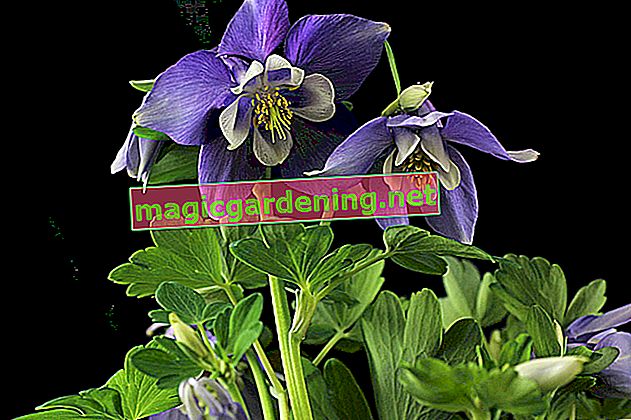
Does the columbine have to be watered?
If the columbine is in the pot, it should be watered when the top layer of soil has dried. In the open field, however, a columbine only needs a regular supply of water when it is growing. This perennial should also be watered in dry seasons. However, waterlogging must be avoided. Rainwater is best suited for watering because it is free of lime.
also read
- In which location does the Columbine feel comfortable?
- Planting a columbine works like this!
- Cutting the Columbine - why and how?
Do these plants need fertilizer?
It is not absolutely necessary to fertilize the columbine. Anyone who works compost into the soil when planting does not need to try to fertilize until the next year. A columbine in a pot should be lightly fertilized every 2 weeks during its growing season. Fertilizing will be stopped from the end of August.
How is the columbine cut?
Also a cut of the columbine is not necessary. However, if you do not want the seed heads to develop and the columbine to spread throughout the garden by self-sowing, you should remove the faded flowers. The seeds usually develop between July and August.
A cut can also be made in autumn or, alternatively, in early spring. After their growing season, columbines usually look unsightly, as their foliage turns yellow and dries up. Cut the plants back to just above the ground! Since the columbine is poisonous, it is advisable to wear gardening gloves when cutting.
Can columbines tolerate a transplant?
Transplanting or repotting should be done before or after the flowering period. During the flowering period, such actions can quickly damage the columbine. She is busy blooming and a change of location would also rob her of strength.
What about diseases and pests?
Since columbines are poisonous, they are not very attractive to the majority of pests. Especially snails prefer to avoid them. In contrast, the following pests like columbines:
- Frostworm caterpillars (eat leaves and buds)
- Mealybugs (form white webs)
- Columbine Gall Mosquito (eats buds)
Very few columbines are prone to disease. Only poor site conditions and above all dry soil can weaken the plants and make them susceptible to disease. Then powdery mildew can occur. Infested parts should be cut off quickly and disposed of (not in the compost)!
Tips & Tricks
In the columbine growth phase, it is important to remove any disturbing weeds. Otherwise the weeds will overgrow the young columbines. As a result, these draw the short straw and die.








